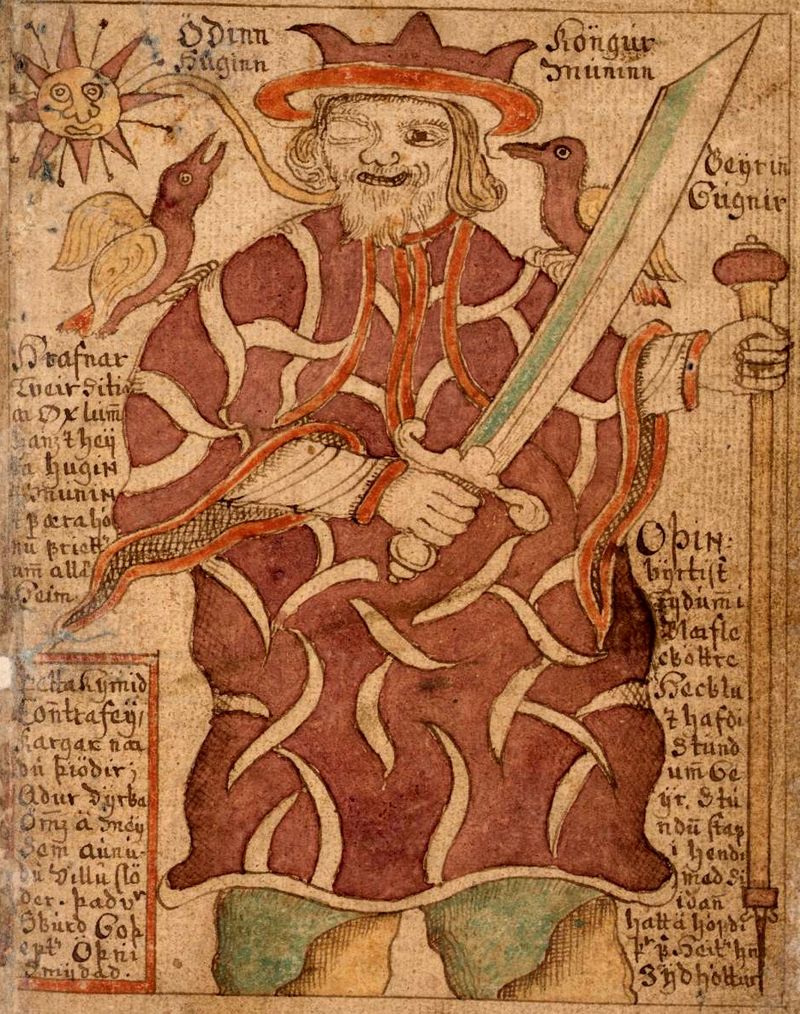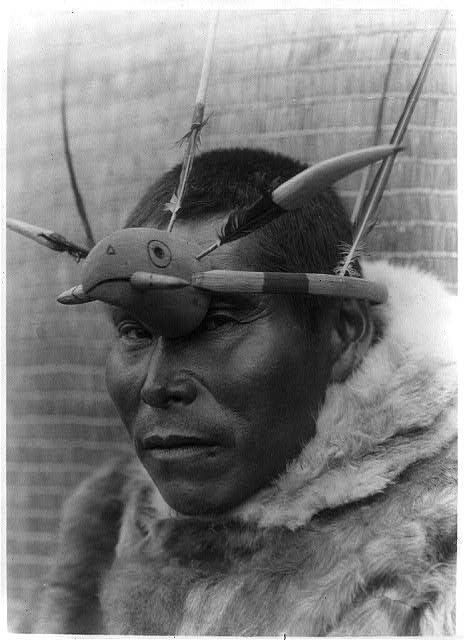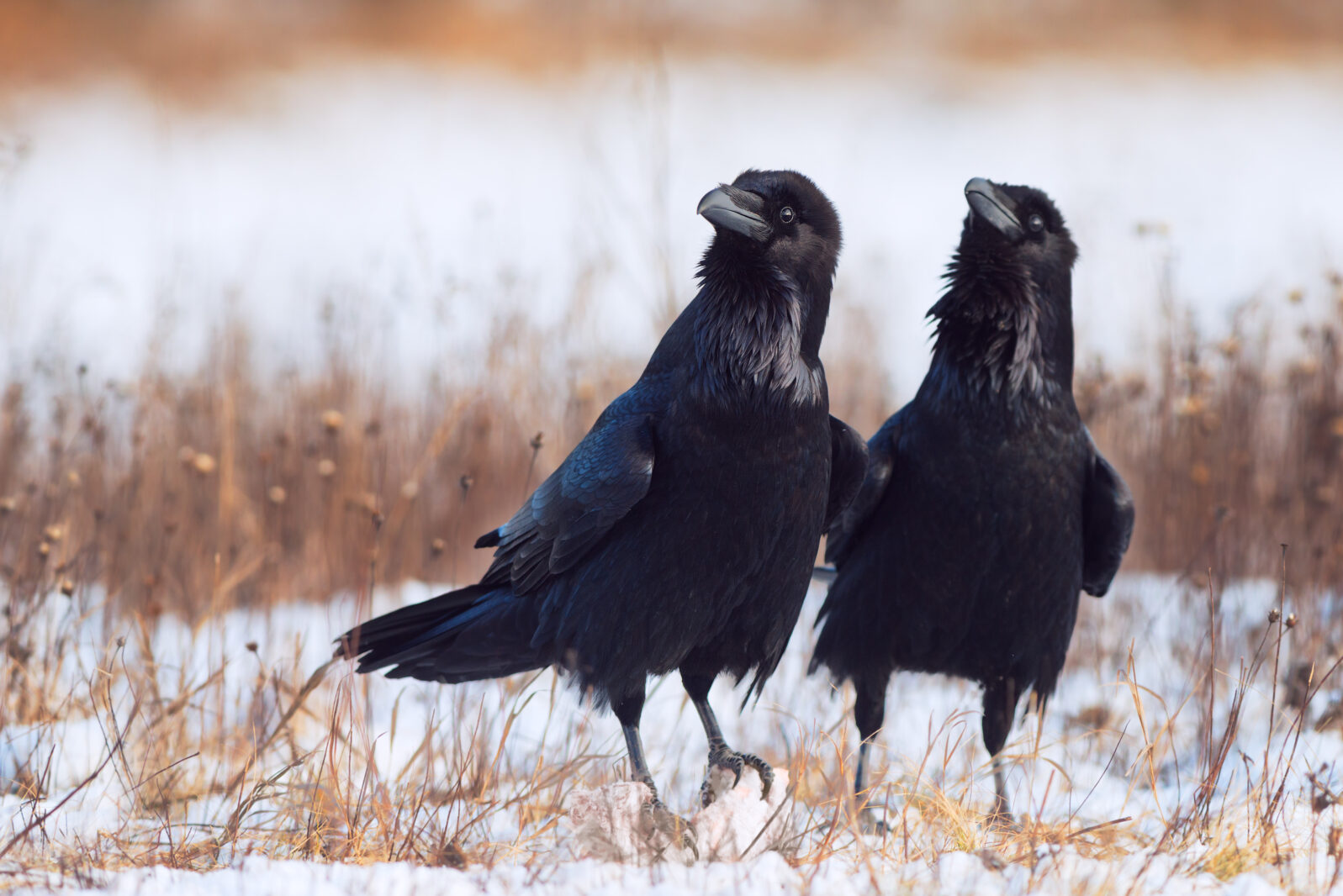Why Does Science Embrace the “Talking Animals” Myth?
Many birds are quite smart but why do some researchers imply that they think like people?In recent years, studies have confirmed a widespread cultural intuition that some birds, particularly corvids like crows and ravens, are “smart.” They show considerable problem-solving skills. Thus, they loom large in mythology as messengers and tricksters. For example, the Norse king of the gods (pictured) had two ravens as advisors.

Oddly enough, science today retains the mythology and makes a curious use of it: New discoveries about the specifics of corvid brain organization and intelligence are framed as demonstrating that humans do not really have as exceptional thinking ability as we suppose:
Research unveiled on Thursday in Science finds that crows know what they know and can ponder the content of their own minds, a manifestation of higher intelligence and analytical thought long believed the sole province of humans and a few other higher mammals.
A second study, also in Science, looked in unprecedented detail at the neuroanatomy of pigeons and barn owls, finding hints to the basis of their intelligence that likely applies to corvids’, too.
Sharon Begley, “Brainiacs, not birdbrains: Crows possess higher intelligence long thought a primarily human attribute” at Stat
Here’s what the first study mentioned above, from the University of Tübingen, actually showed:
Humans have tended to believe that we are the only species to possess certain traits, behaviors, or abilities, especially with regard to cognition. Occasionally, we extend such traits to primates or other mammals—species with which we share fundamental brain similarities. Over time, more and more of these supposed pillars of human exceptionalism have fallen. Nieder et al. now argue that the relationship between consciousness and a standard cerebral cortex is another fallen pillar (see the Perspective by Herculano-Houzel). Specifically, carrion crows show a neuronal response in the palliative end brain during the performance of a task that correlates with their perception of a stimulus. Such activity might be a broad marker for consciousness. –
A neural correlate of sensory consciousness in a corvid bird, By Andreas Nieder, Lysann Wagener, Paul Rinnert Science, 25 Sep 2020 : 1626-1629
The paper is open access.
Stripped of the rhetoric about supposedly fallen “pillars of human exceptionalism,” the researchers found a neuronal response in carrion crows that “might be a broad marker” for consciousness.
Well, sure, it might. But before we get carried away, the consciousness we should know the most about is human consciousness, which remains almost a complete mystery to us, despite much research. Many elements of brain organization in humans and birds may turn out to be correlates of consciousness. But the treatment of the question here has far more to do with a myth—that science is showing that human consciousness is not exceptional—than it does with unraveling the mystery of human or corvid consciousness.
That said, one science writer offers an interesting tidbit that impacts the current Darwinian theory of evolution:
The broader, speculative implication of the research is that the last common ancestor of birds and mammals, which existed 320 million years ago, may also have had the same cognitive machinery and thus been similarly capable of formidable thinking abilities.
Ross Pomeroy, “Newly Discovered Brain Structure May Grant Birds Impressive Intelligence.” at RealClearScience
Well, his proposed new estimate greatly shortens the amount of time available for natural selection acting on random mutation to produce intelligence. Not surprisingly, evolution theory is currently undergoing considerable revision just now, on account of many similar issues.
Now here’s what the second study, from Ruhr-University Bochum, actually showed about the organization of bird brains, using new technology,
Some birds can perform amazing cognitive feats – even though their forebrains seem to just consist of lumps of grey cells, while mammalian forebrains harbour a highly complex neocortex. A study reveals for the first time amazing similarities between the neocortex of mammals and sensory brain areas of birds: both are arranged in horizontal layers and vertical columns.
Ruhr-University Bochum, “The surprising organization of avian brains” at ScienceDaily (September 25, 2020)
We are then informed,
Some birds are capable of astonishing cognitive performances to rival those of higher developed mammals such as primates. For example, ravens recognise themselves in the mirror and plan for the future. They are also able to put themselves in the position of others, recognise causalities and draw conclusions. Pigeons can learn English spelling up to the level of six-year-old children.
Ruhr-University Bochum, “The surprising organization of avian brains” at ScienceDaily (September 25, 2020)
No source is given for the latter information about such items as planning for the future and paper itself requires a subscription. Readers are expected to take it on faith, as we once took talking ravens on faith. That’s a problem because broad claims for animal intelligence that go well beyond problem-solving abilities are often questionable.
(The Northwest ceremonial mask (pictured) honors the raven as a creator. Library of Congress.)
Consider, for example, the mirror test (“ravens recognise themselves in the mirror”). It wasn’t until a fish, the cleaner wrasse, passed the test that a number of researchers began to voice questions.

Here’s what emerged: The test was originally developed for chimpanzees. Their ability to recognize themselves in a mirror can be used to assess chimps’ cognitive ability because they use eyesight much as humans do. Dogs, by contrast, pay far more attention to smell when recognizing other animals. Thus their ability to recognize themselves in a mirror may not be a good measure of their cognitive ability. (See Mirror, mirror, am I a self?) In the same way, a test of the human ability to recognize others based on smell might garner dismal results but it proves nothing about human cognition. As for the fish, its ability to recognize its image may be part of a broad suite of fish traits that don’t point to individual cognition at all. Other expansive claims for (or against) animal cognition feature similar problems. For example,
… there was a mild flurry in science media when it turned out that cats do recognize their names Some analysts seem to have assumed that, to recognize their names, cats must be able to think like people. But, as Michael Egnor points out, cats recognize their names as a signal, not an abstraction. The cat learns that the sound (Tabby!, perhaps) means that something specific and concrete is likely to happen to him soon. He does not associate the sound with abstract ideas about himself or anything else.
– Mirror, mirror, am I a self? Mind Matters News
Back in the real world, heady claims for birds (or chimpanzees, for that matter) deserve closer scrutiny. For example, a theoretical linguist identifies key similarities between bird and human communication but says, not so fast, without stopping and defining our terms. Referring to the differing flight and response calls of chestnut-crowned babblers (Pomatostomus ruficeps), he writes,
Bird communication does not share the capacity of human language to freely generate new meanings from meaningless elements. The differences between the two systems are qualitative and abrupt. Since birds lack a recursive operation for the creative use of call vocalizations, evolutionary and comparative biological studies of avian and human communication will always remain a problematic enterprise. Such studies are further hindered by the fact that humans are the only extant species of the genus Homo to possess discretely unbounded language.
Riny Huybregts, “Babbling Birds” at Inference Review
But these are distinctions many do not wish to make. And the myths that never die often reveal more than they intend. For example, analyzing the two studies, Suzana Herculano-Houzel writes at Science,
The term “birdbrain” used to be derogatory. But humans, with their limited brain size, should have known better than to use the meager proportions of the bird brain as an insult. Part of the cause for derision is that the mantle, or pallium, of the bird brain lacks the obvious layering that earned the mammalian pallium its “cerebral cortex” label. However, birds, and particularly corvids (such as ravens), are as cognitively capable as monkeys and even great apes.
Suzana Herculano-Houzel, “Birds do have a brain cortex—and think” at Science
Just a minute. Few people familiar with corvids have supposed that they can’t think at all. And if they really are as “cognitively capable as monkeys and even great apes,” that only makes humans much more exceptional than previous supposed. Apparently, there is no “ladder of intelligence.”
Generally, we are the only life form that writes great novels or great equations, invents philosophies or religions, or sends probes into space just to find out what is up there. So we really are just unique.
In the end, crows, ravens and various other birds are proving to be as smart as our ancestors thought they were. But the attempt to debunk human intelligence by implication is a more outlandish myth than any raven stories from our traditional mythology.
You may also enjoy:
The real reason why only human beings speak. Language is a tool for abstract thinking—a necessary tool for abstraction—and humans are the only animals who think abstractly.
and
In what ways are cats intelligent? It’s hard to come up with an interspecies IQ test. We live in a world where dogs are smarter than wolves in some ways but wolves are smarter than dogs in others. So much depends on what we want to measure. So let’s look at cats in relation to dogs because dogs have been studied so much more.
